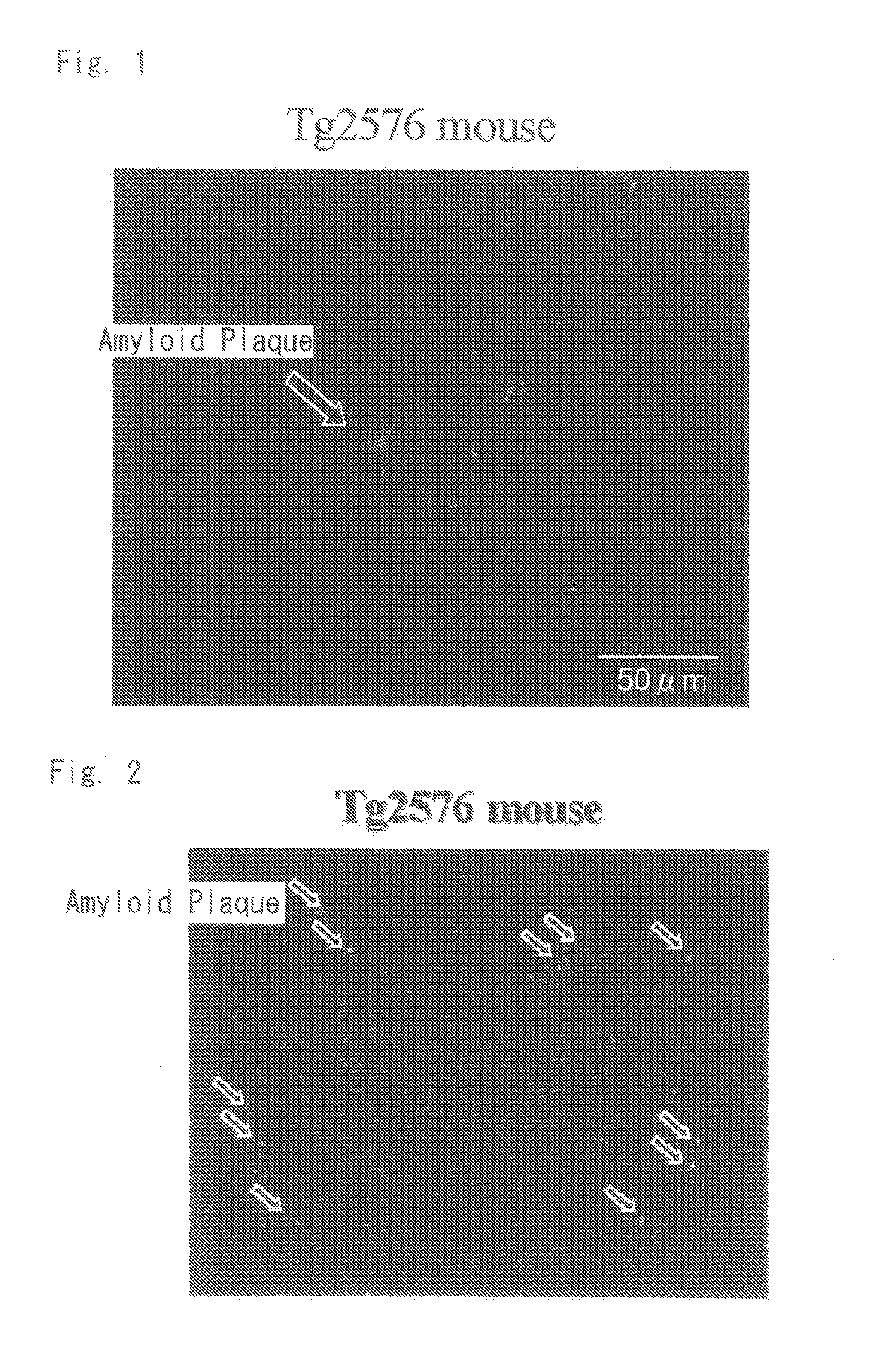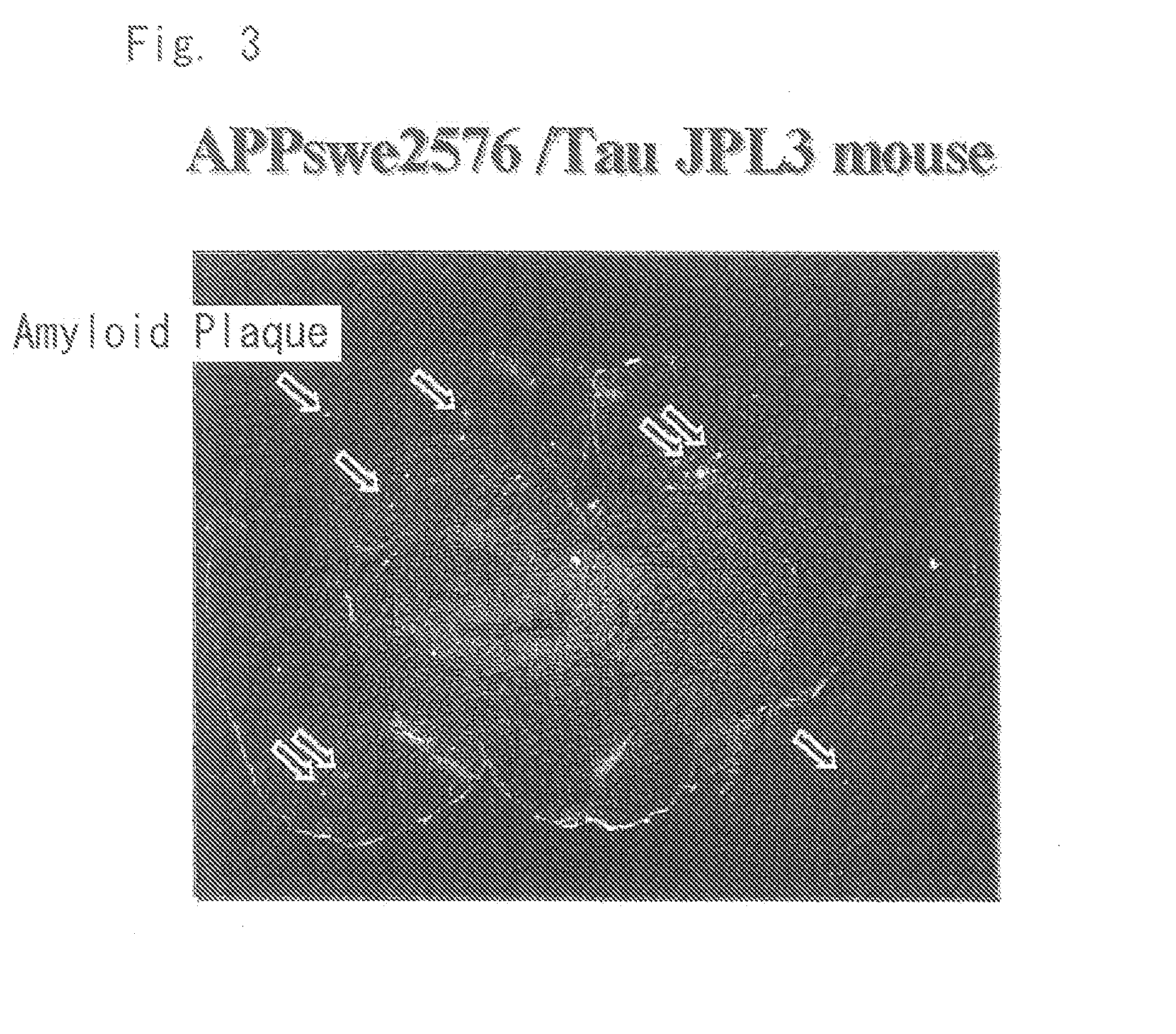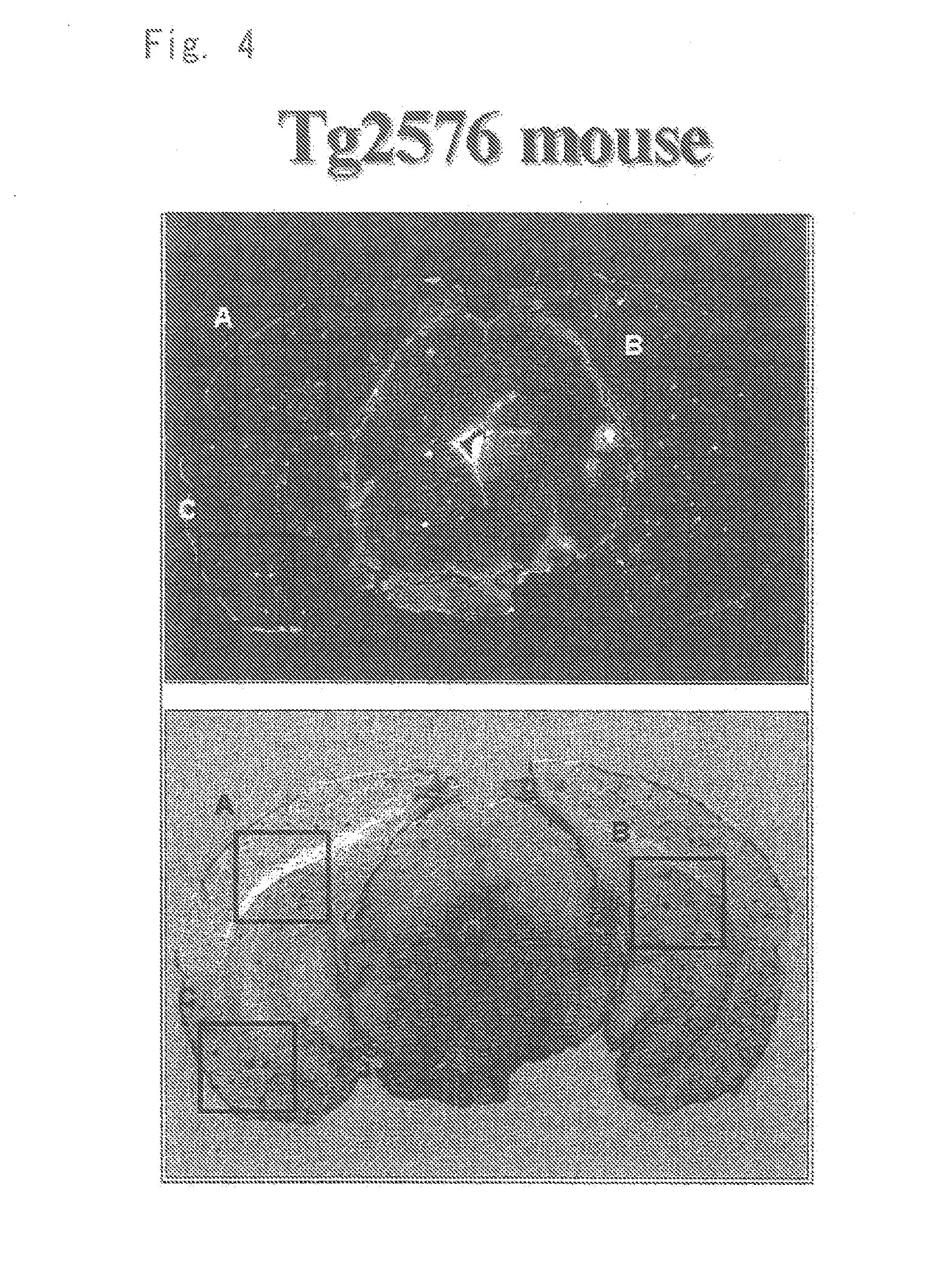Diagnostic probe for conformation disease
a technology for conformation disease and diagnostic probe, which is applied in the direction of nervous disorder, organic chemistry, drug composition, etc., can solve the problems of unsatisfactory diagnostic methods, no one could make any significant progress in diagnosis of alzheimer disease, and medical system crisis, and achieve high specificity to amyloid protein, low mutagenicity, and high blood-brain barrier permeability
- Summary
- Abstract
- Description
- Claims
- Application Information
AI Technical Summary
Benefits of technology
Problems solved by technology
Method used
Image
Examples
example 1
[0213]Investigation of models with amyloid β protein deposition in their brain:
Investigation of transgenic (Tg) mice with amyloid deposition in their brain:
[0214](1) Tg mice (Tg2576 or APPswe2576 / Tau JPL3) were used. A test compound was administered to a Tg mouse via its tail vein. After 1 hour, the chest of the mouse was cut open under deep anesthesia with Na-pentobarbital, and 10% neutral buffer formalin was transcardially perfused through the mouse to fix it.
[0215](2) The head was cut open, and its brain was taken out, and dipped in 30% sucrose for 12 hours or more. Next, the taken-out brain was immediately frozen in finely-ground dry ice, and using a cryostat (by Bright, Model-OT), a frozen section of the brain was formed on a poly-L-lysine-coated slide.
[0216](3) Not entrapped, the thus-prepared brain section was microscopically observed with a fluorescence microscope (Nikon Eclipse 80i), and photographed with a digital camera (Nikon Dxm 1200F or Photometrics' Cool SNAP ES). The...
PUM
| Property | Measurement | Unit |
|---|---|---|
| body weight | aaaaa | aaaaa |
| body weight | aaaaa | aaaaa |
| body weight | aaaaa | aaaaa |
Abstract
Description
Claims
Application Information
 Login to View More
Login to View More - R&D
- Intellectual Property
- Life Sciences
- Materials
- Tech Scout
- Unparalleled Data Quality
- Higher Quality Content
- 60% Fewer Hallucinations
Browse by: Latest US Patents, China's latest patents, Technical Efficacy Thesaurus, Application Domain, Technology Topic, Popular Technical Reports.
© 2025 PatSnap. All rights reserved.Legal|Privacy policy|Modern Slavery Act Transparency Statement|Sitemap|About US| Contact US: help@patsnap.com



